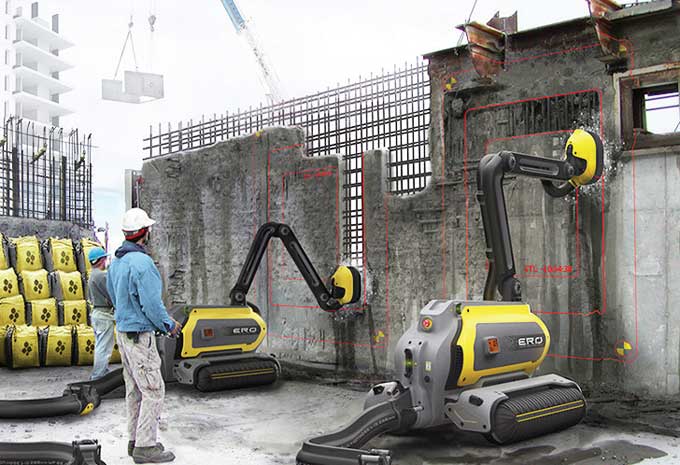NEWS | SOFTWARE | SHEET
Robotics in Construction: Applications and Implications
Numerous industries have been transformed by robotics, and construction is no exception. With robotics in construction, efficiency, safety, and productivity can be enhanced, costs can be reduced, and construction quality can be improved.
Robotics Applications in Construction
3D Printing
One common use of robotics in construction is 3D printing. Robotic arms are used to print layers of concrete, producing intricate motifs and shapes that conventional construction techniques could find challenging.
With lower labor and material costs, 3D printing gives architects and designers the freedom to experiment with novel building design and construction options.
Autonomous Vehicles
Complex construction sites frequently require the transportation of significant amounts of employees, equipment, and materials. Drones, bulldozers, and trucks that operate autonomously can move materials and equipment more precisely and effectively through construction sites.
Robotic Bricklayers
Robotic bricklayers can lay bricks more quickly and precisely than human laborers. These robots can also operate in dangerous settings, such high-rise structures where there is a chance of accidents or falls.
Robotic Demolition
Robotic demolition is the controlled removal of materials or the dismantling of constructions using robots. This technology is especially helpful in cities, where there is a lack of space and buildings must be carefully removed to protect nearby structures.
Robotics Implications in Construction
Safety
Robotics in construction has substantial implications for safety. On building sites, using robots can greatly reduce the chance of accidents and injuries.
Robots can carry out dangerous duties, such operating at heights, using heavy equipment, and working in cramped areas, reducing the risk of injury to human workers.
Increased Efficiency
Robots can complete tasks more quickly and precisely than humans. They are capable of working constantly for lengthy periods of time without needing to take pauses or rest. This higher productivity translates into lower labor costs, quicker project completion timeframes, and better building quality.
Reduce Costs
Construction expenses can be considerably decreased using robotics. Less human labor is required when jobs can be completed more quickly, which results in cheaper labor costs. Additionally, since robots can operate in dangerous conditions, there are fewer chances of accidents and material and equipment damage, which lowers the cost of maintenance and replacement.
Job Replacement
Although automation in construction can boost productivity and cut costs, there is a chance that certain jobs could be eliminated. There may be less need for human workers when more tasks are mechanised. To ensure that workers stay useful in a more automated economy, the construction sector will need to discover ways to retrain and redeploy workers.
Requirements of Highly Trained Labor
It is crucial that skilled workers design, program, and maintain construction robots. Staff with the required expertise will be needed to operate and maintain these robots.
This requirement may offer new employment opportunities for workers with specialized knowledge of robotics, programming, and automation.
Robotics in construction has the potential to revolutionize the sector by boosting production, safety, and efficiency while cutting costs. Robotics can handle dangerous tasks, operate quicker and more correctly than human workers, and lessen the demand for human labor. Applications range from 3D printing to robotic demolition.
To get more details, go through the following video tutorial.
Lecturer: Mayfair Homes
Yet, there are repercussions to take into account, including the requirement for skilled labor and the replacement of jobs.
The construction sector will need to change and adapt in order to take advantage of robotics' advantages while dealing with these repercussions. Robotics integration offers new opportunities for creative building design and construction, which bodes well for the future of construction.


